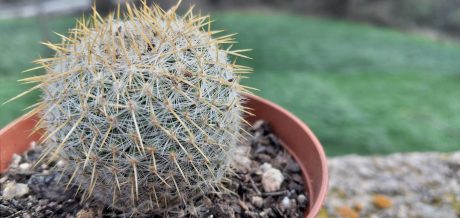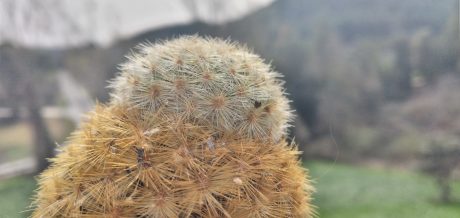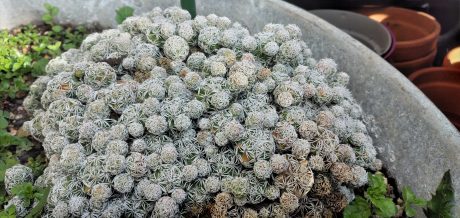Here’s a cactus considered strange. It is the Mammillaria Dixanthocentron better known as the Bisnaga two yellow spines or piny cactus. It is solitary and globular at first and over the years it becomes cylindrical and grows between twenty and thirty centimeters in height. The name of two yellow spines comes from the two central spines that are generally yellow, although they can also be from reddish white through brownish white. Then it has a few radial spines that do not protrude as much as the others. There are between fifteen and twenty of these.
When they are small and the spines begin to form, the wool is scarce, but as it grows cylindrical, the wool increasingly develops (between this and the length of the central spines gives it the name “cactus pineapple”).
As for the flower, it is considerably large when one considers the size of the cactus. It is eight to ten centimeters long and five to ten centimeters wide varying colors of intense red to a pale pinkish red. When this is marked, a small yellow fruit comes down and orange above and then brown seeds that can be used to create new specimens in the spring.
It likes to receive direct sunlight, as this will encourage blooming and its development, but also doesn’t dislike a little semi-shadow in the central hours of the day, which the sun is stronger and can burn the cactus.
Finally, the irrigation must be abundant in summer and spring (especially in times of growth) and be scarce or null in autumn and winter (in autumn it can be irrigated once a month, but at the moment temperatures are less than seven degrees positive to stop providing water). We must control irrigation in the sense that before irrigation we must ensure that the substrate is completely dry, so if it is not watered every week in the spring and summer, it can be done once every fortnight.
If we do not respect this, the cactus can be prone to rot and later death. It is sensitive to frost, rather than exposing it to lower minimum temperatures of five positive degrees.









Reviews
There are no reviews yet.